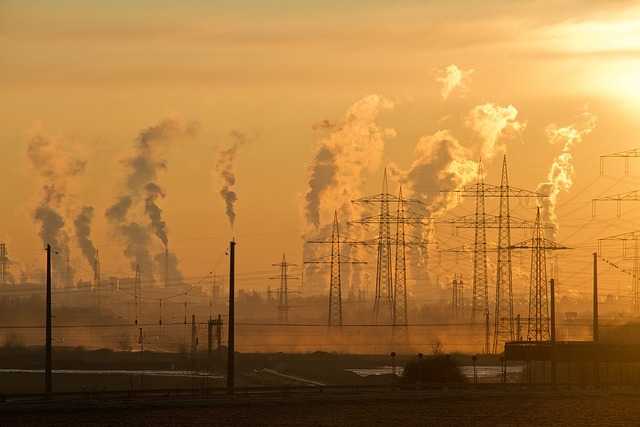Overview of Climate Change Summit 2024
As I delve into the Climate Change Summit 2024, it’s imperative to understand the core objectives of this critical event.
The Purpose of the Summit
I’ll begin by examining the primary goal of the summit, which centers on fostering international cooperation to tackle the pressing issue of climate change.
This summit serves as a platform for global leaders to engage in constructive dialogue and form partnerships aimed at implementing sustainable solutions.
The focus is on devising comprehensive strategies to mitigate the adverse effects of climate change and promote environmental conservation on a global scale.
Major Participants and Their Roles
Turning the spotlight on the key players at the summit to:
- World leaders
- Environmental experts
- Policymakers and
- Representatives from various countries convene to share expertise and advocate for impactful climate policies.
Each participant brings a unique perspective and expertise to the table, contributing to the formulation of inclusive and effective measures to combat climate change.
Their collective efforts are instrumental in shaping the decisions and agreements that emerge from the summit, shaping the future trajectory of environmental policies worldwide.
Key Agreements Reached at the Summit
1. Carbon Emission Reduction Targets
At the recent Climate Change Summit 2024, significant agreements were made regarding carbon emission reduction targets. Global leaders committed to ambitious goals aimed at reducing carbon emissions by 45% by 2030 compared to 2020 levels.
The adoption of these targets is a crucial step in combating climate change and transitioning towards a sustainable future.
2. Funding for Climate Change Adaptation
One of the key outcomes of the Summit was the agreement on increased funding for climate change adaptation efforts.
Countries pledged to double their financial contributions to support vulnerable nations in adapting to the adverse effects of climate change.
This funding will be instrumental in enhancing resilience and implementing measures to mitigate the impact of extreme weather events and rising sea levels.
3. Technology Sharing and Support Mechanisms
Another significant agreement reached at the Summit pertained to technology sharing and support mechanisms. Countries agreed to enhance cooperation in sharing technological advancements and innovations to facilitate climate action.
This collaboration aims to accelerate the deployment of clean energy technologies, promote sustainable practices, and promote the development of climate-resilient infrastructure globally.
The exchange of knowledge and resources will play a crucial role in achieving collective climate goals and fostering sustainable development across nations.
Controversial Issues and Debates
Points of Contention Among Nations
In discussions during the Climate Change Summit 2024, one contentious issue that emerged was the varying commitments to carbon emission reductions.
While some countries pledged ambitious targets, others faced criticism for setting less stringent goals.
This divergence in approaches raised concerns about achieving collective environmental goals and highlighted the disparities in responsibility among nations.
International negotiations often stall on such differences, underscoring the complexity of balancing national priorities with global sustainability imperatives.
The Role of Developing Economies
A key focal point of debate at the Climate Change Summit 2024 was the role of developing economies in combating climate change.
Developing nations argued for differentiated responsibilities, citing historical emissions by developed countries and the need for financial and technological support to transition to greener energy sources.
This debate underscored the challenges of equity and fairness in climate action, emphasizing the importance of collaboration and solidarity between countries with varying levels of economic development.
The discussions reflected the ongoing struggle to find a balance between acknowledging past contributions to global warming and equitable distribution of efforts in the fight against climate change.
The Impact of the Summit on Global Policy

Short-Term vs. Long-Term Policy Shifts
In discussing the impact of the Climate Change Summit 2024 on global policy, I observe a distinction between short-term and long-term policy shifts.
- Short-term policy shifts resulting from the summit focus on immediate actions, such as setting short-term targets for carbon emission reductions.
These targets often serve as stepping stones towards achieving the long-term goal of carbon neutrality. - On the other hand, long-term policy shifts involve strategic planning and implementation of measures to ensure sustainable practices and continued progress beyond the summit’s immediate timeline.
The summit’s influence on global policy is evident in the balance between these short-term and long-term policy directions, emphasizing the importance of both immediate actions and sustained efforts in combating climate change.
The Influence on National Climate Policies
Analyzing the influence of the Climate Change Summit 2024 on national climate policies, I find that the summit has spurred significant changes in how countries approach climate action at the national level.
National climate policies are increasingly aligning with the commitments made at the summit, reflecting a global consensus on the urgency of addressing climate change.
Countries are revising their climate targets, enhancing regulatory frameworks, and investing in renewable energy sources to meet the summit’s objectives.
The summit’s influence on national climate policies underscores the interconnected nature of global climate action, where local efforts contribute to the broader international commitment to combatting climate change.
Steps Forward After the Summit
Monitoring and Implementation Strategies
In the aftermath of the Climate Change Summit 2024, rigorous monitoring frameworks are imperative to track the progress of nations in meeting their emission reduction goals.
It’s vital to establish robust mechanisms that ensure transparency and accountability in the implementation of pledged commitments.
This involves continuous evaluation of climate policies and regular reporting of emission levels to gauge the effectiveness of mitigation efforts.
By monitoring closely, we can identify areas of improvement and recalibrate strategies to stay on course towards achieving the set targets.
Failure to uphold monitoring standards could hinder the collective efforts to combat climate change effectively.
International Collaboration and Partnerships
A key aspect following the summit is fostering international collaboration and forging partnerships to address climate change on a global scale.
It’s essential for nations to work together, sharing knowledge, resources, and technologies to accelerate climate action.
Collaborative initiatives can lead to innovative solutions and effective strategies in combating the climate crisis.
Establishing strong partnerships between developed and developing economies is crucial for equitable distribution of responsibilities and resources.
By pooling expertise and resources through collaborations, countries can amplify their impact and drive sustainable change towards a greener future.



